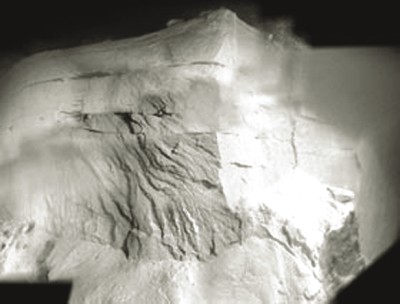TechNews
Scientists reveal unusual tsunami findings
Ahmed Ashiful Haque
December 26, 2004 was the dreadful day when the deadly tsunami swept across coastlines of the Indian Ocean sweeping along with it more than 200000 lives. Just one year after the Great Sumatra Earthquake of 2004 created the deadliest tsunamis in history, scientists are getting a better idea of how it all happened. By inspecting the seafloor off the Indonesian island of Sumatra, they have developed a detailed geological picture of how the earthquake unfolded the tsunami. According to the findings, when a 1,300 km segment of an undersea fault line suddenly ruptured, the quake occurred. The fault is called Sunda Megathrust. It stretches from Burma to Australia, where one tectonic plate slips beneath another, shoving it upward. The rupture traveled at a rate 2.2 km per second. Researchers are now predicting that another huge quake and devastating tsunami could be coming soon. The scientists working on an international marine survey also found a "DEAD zone" devoid of life at the epicentre of last year's tsunami four kilometres beneath the surface of the ocean. The scientists were investigating the heart of the deadliest tsunami on record; they used a submersible vehicle to take an 11-hour dive to the site five months after the disaster. They were shocked to find no sign of life around the epicentre, which opened up a 1000-metre crack on the ocean floor. Instead, there was nothing but eerie emptiness. The powerful lights of the scientists' submersible vehicle, piercing through the darkness, showed no trace of anything living. A scientist working on the ambitious project "Census of Marine Life" to catalogue all life in the oceans by 2010, Professor Ron O'Dor said, "You'd expect a site like this to be quickly re-colonised, but that hasn't happened. It's unprecedented. Normally, when you go to the bottom of the sea anywhere and take a sample or look around, there's always something alive. But five months after the earthquake, this entire plain, created by the collapse of the cliff, was essentially devoid of life." He also had an explanation for this. When tsunami was caused by an earthquake with a magnitude of 9.3, it tore the earth apart off the west coast of Sumatra. Part of the ocean floor was thrust up to create a 40-metre-high undersea cliff that then collapsed. They though that the collapsing cliff had buried the food sources of bottom feeders, which in turn had an effect on larger predators. "No one has ever got to a site like this so quickly before," he said. "It may just be that it takes a while for things to get back to normal. The sea is very cold at this depth, and typically the speed of life is proportional to temperature. Nothing happens very fast at 4C." The scientists had initially suspected that the large tsunamis were created by both the sudden uplift of the seafloor and the quake-triggered landslide. But new research now proves them wrong. They are now suggesting that the surging of the seafloor had a lot more effect to the tsunamis than predicted earlier. The seafloor discoveries, plus the gathering of more seafloor data from the nations around the earthquake zone has allowed modellers to correct existing tsunami models to make them better at predicting what might happen next time. Still, it will take time to prepare everyone for the next one. "Hopefully this earthquake will wait a decade or so," said a scientist.
|

The seafloor at Sumatra |